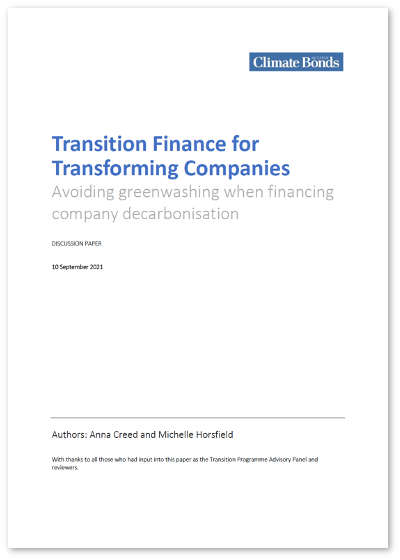Financial sector’s response to ‘code red for humanity’ won’t be successful until rules of the road are established
Issuance in form of SLBs from sectors not active in green bonds
The sustainable finance market is booming, and Climate Bonds Market Intel shows that Green Social and Sustainability (GSS) bonds have reached USD496bn in H1 2021. Indeed, 6% of total labelled debt issuance is in the form of Sustainability Linked Bonds (SLBs).
Interestingly, SLBs come from different sectors than those that issue in the Green, Social and Sustainability (GSS) space. These are the first signs that the heavy emitting sectors not only recognise the role they must play in economy-wide transition, but also see the opportunity of tapping into the sustainable finance market by linking up with investors who want to make their money matter by supporting efforts to transition.
New market needs structure
This market will not grow to its full potential without structure and some ‘rules of the road’. Climate Bonds is ideally placed to build on the strong foundation of the Standards and Certification Scheme that it established for the green bond market. The sector specific standards define the criteria for what “good” looks like, and USD185bn of Use of Proceeds (UoP) bonds have now been Certified.
Some shaky first examples have highlighted the areas that need structure. Notably, these are in how KPI’s are set. Usually created by the entity themselves, such bespoke metrics mean that it’s difficult to benchmark one against others. In addition, it’s often hard to determine if the KPI’s chosen are the right ones. Many have selected KPI’s that are not ambitious enough to align with the transition pathways that will be needed for achieving net zero by 2050.
Climate Bonds outlines the 5 hallmarks that identify credible transition plans
 With our expertise in setting standards, we propose five hallmarks that we think a credible transition plan should have. There are other activities that could be included, but we think these are the salient ones that balance the identification of credible robust plans whilst being mindful of the burden of reporting on issuers.
With our expertise in setting standards, we propose five hallmarks that we think a credible transition plan should have. There are other activities that could be included, but we think these are the salient ones that balance the identification of credible robust plans whilst being mindful of the burden of reporting on issuers.
What we have detailed are the markers that show a transition that is rapid and robust enough. They address ambition as well as the willingness and ability to deliver on forward looking targets. The hallmarks are:
We publish the discussion paper today, Friday 10th September* and are looking for comments as the hallmarks will form the basis for how financial instruments will be Certified and even how whole companies could be certified.
Please email your feedback to public.consultation@
You can find the paper and translations in Chinese, Spanish and Portuguese here.
The last word
Increasing capital flows to investments that address the transitions needed across the economy will be important to deliver the pace needed for meeting net zero by 2050. This frontier market like all new opportunities, needs defining and the hallmarks of a credible transition plan outlined in this discussion paper represent the start of some rules of the road.
We conclude with these words from Sean Kidney, CEO Climate Bonds Initiative: “The 2030 & 2050 targets have been set. Climate finance at the entity level, capex shifts & capital flow towards Net Zero business models and that especially in the high emission sectors, is now a core challenge for both corporates and investors.”
“We are putting these five hallmarks of credible transition out to the market for active engagement. Our goal is the rapid development of a robust and transparent transition finance market that supports acceleration of decarbonisation at the entity level. What took almost a decade to develop in green finance, we need to develop in a couple of years for transition finance.”
‘Til next time,
Climate Bonds
*This paper will be the subject of a discussion with Credit Suisse’s Marisa Drew today at 2.30 CEST during the Climate Bonds Conference21.

